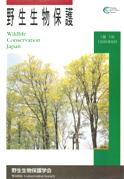Volume 1, Issue 1
Displaying 1-5 of 5 articles from this issue
- |<
- <
- 1
- >
- >|
Original Papers
-
Article type: Original Papers
1995 Volume 1 Issue 1 Pages 1-11
Published: 1995
Released on J-STAGE: August 01, 2017
Download PDF (1081K) -
Article type: Original Papers
1995 Volume 1 Issue 1 Pages 13-20
Published: 1995
Released on J-STAGE: August 01, 2017
Download PDF (752K) -
Article type: Original Papers
1995 Volume 1 Issue 1 Pages 21-29
Published: 1995
Released on J-STAGE: August 01, 2017
Download PDF (928K) -
Article type: Original Papers
1995 Volume 1 Issue 1 Pages 31-36
Published: 1995
Released on J-STAGE: August 01, 2017
Download PDF (510K)
Essay and Opinion
-
Article type: Essay and Opinion
1995 Volume 1 Issue 1 Pages 37-50
Published: 1995
Released on J-STAGE: August 01, 2017
Download PDF (1394K)
- |<
- <
- 1
- >
- >|
